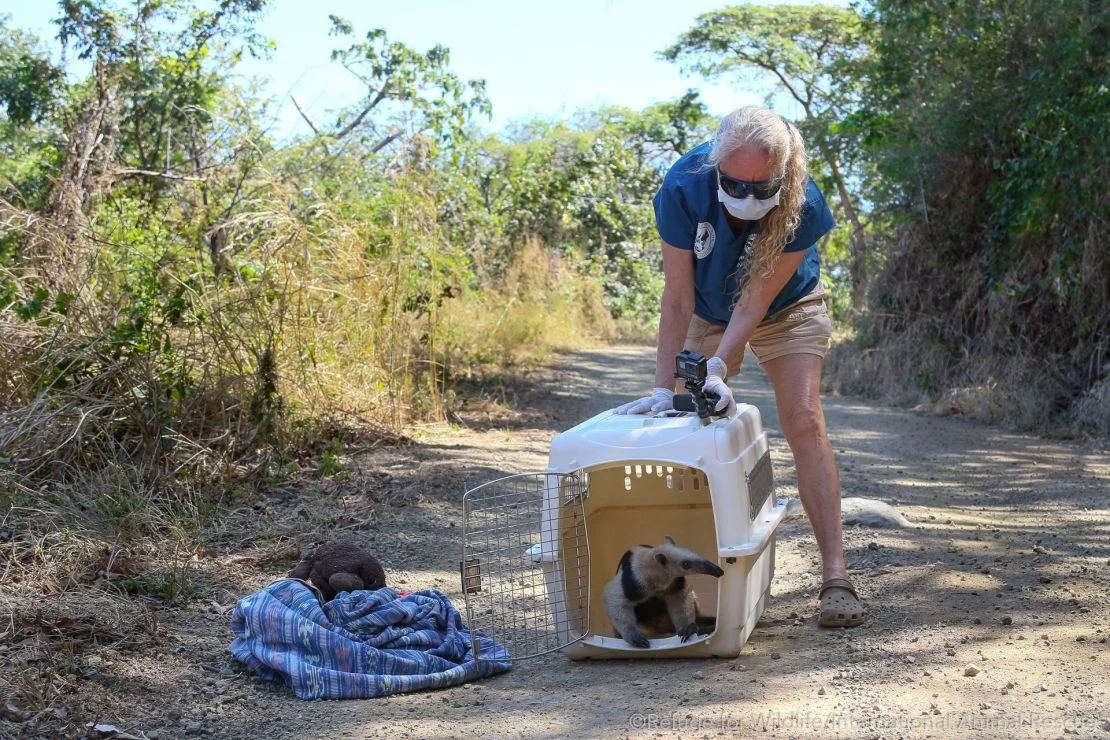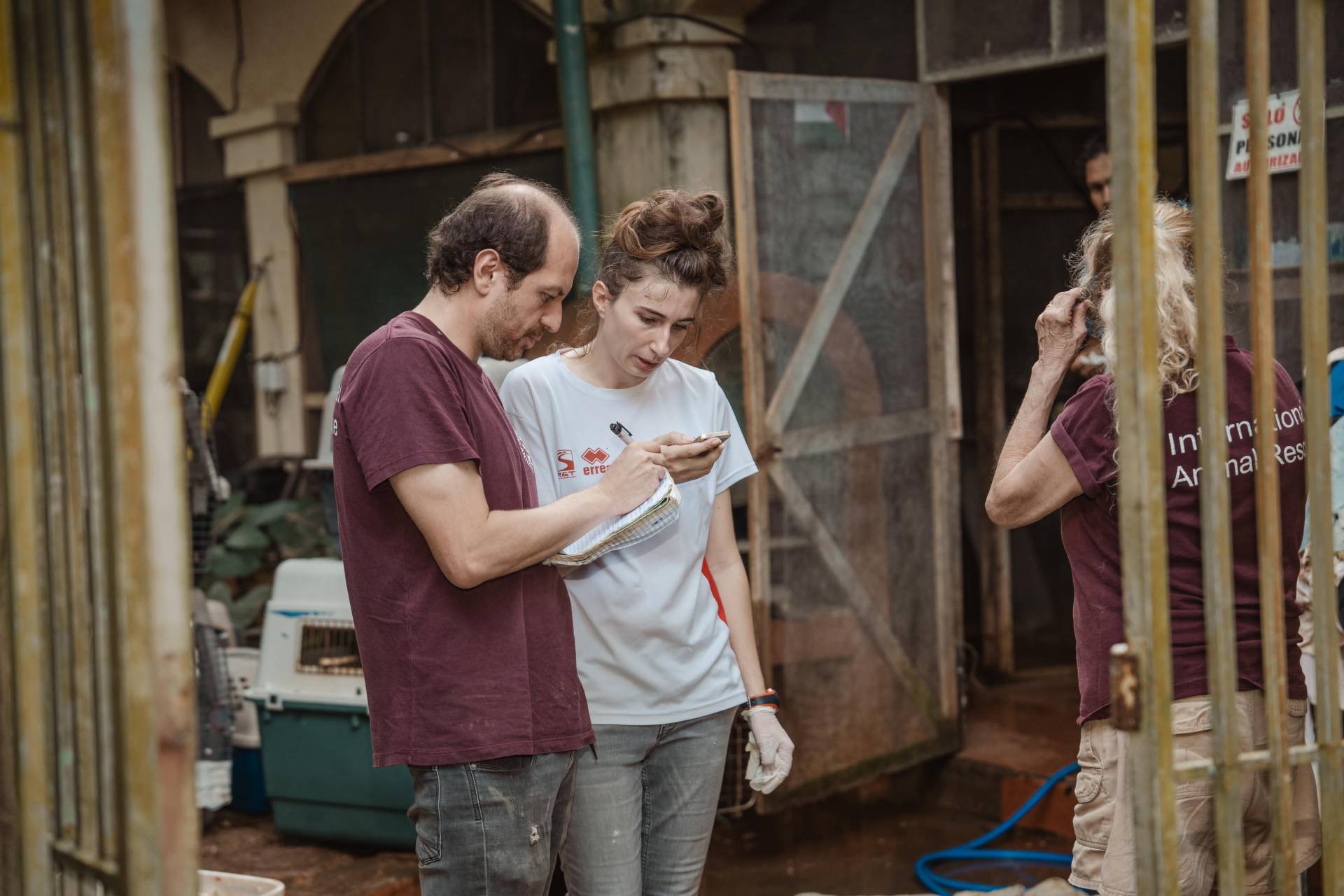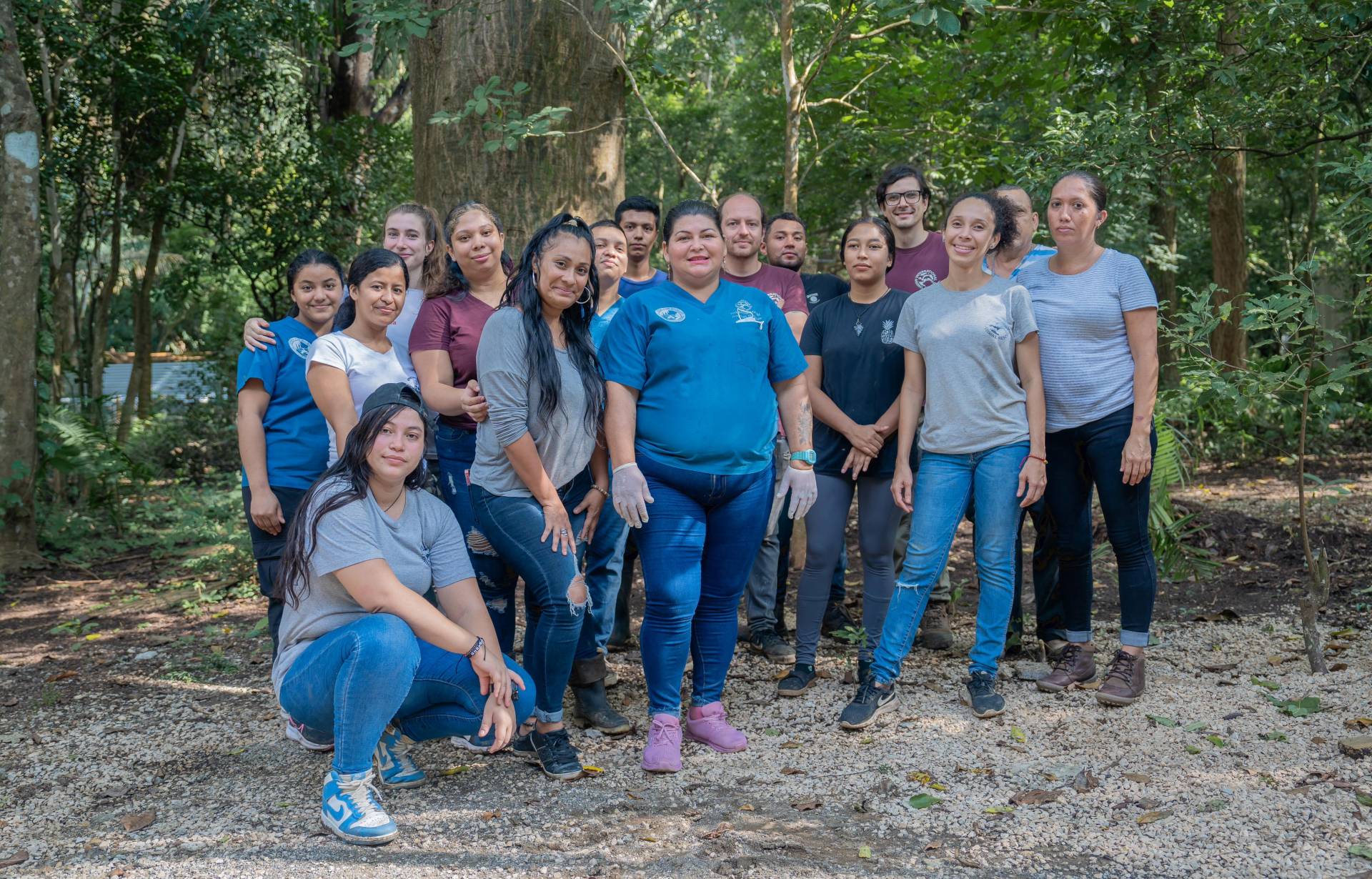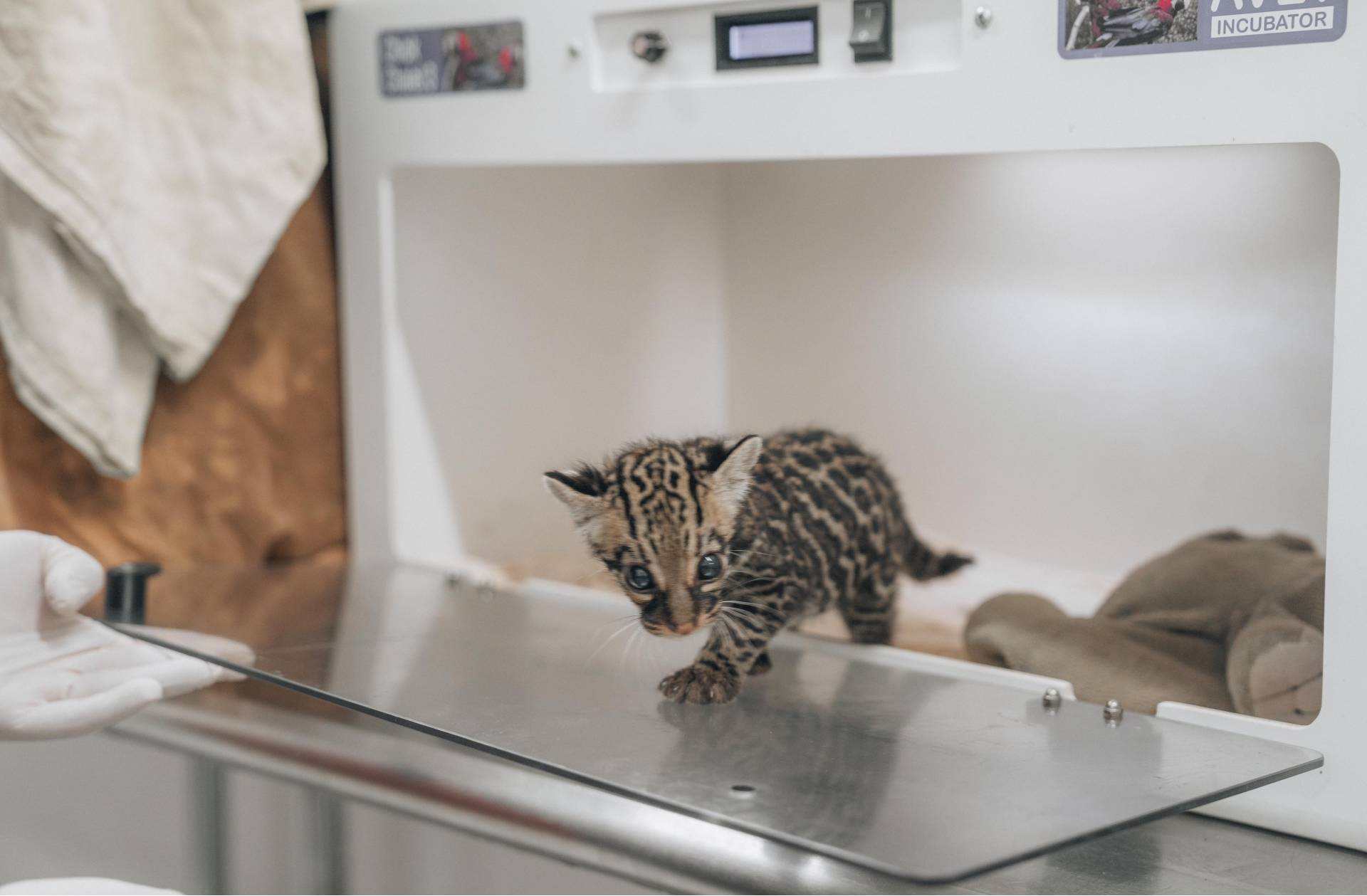The Sir Michael Uren Wildlife Rescue & Education Center
Prior to IAR commencing work in Nosara, Costa Rica in 2017, a wonderful project known as ‘Refuge For Wildlife’ had been operating for almost 20 years. This project was started by Brenda Bombard who recognized the need to help and protect orphaned infant howler monkeys that were victims of electrocution.
Brenda’s passion and perseverance over so many years is remarkable; she dedicated her life (and her home!) to protecting wildlife. When IAR met Brenda there was an instant synergy, given IAR’s experience of rescue, rehab and release in other parts of the world.
Brenda was keen to see the project progress in a sustainable manner and recognized the need for a new wildlife rescue center to maximize the chances of survival for the rehabilitated animals. IAR was able to bring veterinary expertise and funding to complement the work that Brenda and the Refuge For Wildlife team we’re doing. In 2020 the project transitioned to the new IAR Costa Rica foundation, where Brenda still supports the team from the board.
Finally, in late 2023, the dream was realized and the whole program was able to move to the brand-new purpose-built Sir Michael Uren Wildlife Rescue & Education Center in Nosara.




In 2020, trustees of The Michael Uren Foundation awarded a substantial grant to IAR towards the building of a new wildlife rescue and education centre in Nosara, Costa Rica. The need for a new centre was critical. For years vet Francisco and his team had managed with limited space, facilities and equipment to respond to the growing number of injured wild animals. Thanks to the generous contribution from The Michael Uren Foundation, construction of the new centre soon got under way on an area of land within the protected civic parklands of Nosara. The goal was to create a unique asset in the region – not just a wildlife rescue and rehabilitation centre but also a vital hub for raising awareness, building collaboration and facilitating research.
The Sir Michael Uren Wildlife Rescue and Education Centre was completed in November 2023 with all residents at the existing temporary facility moving into their new home by the end of the month.
The new centre has capacity to house up to 200 animals at a time and, should it prove necessary, this will enable the number of howler monkeys undergoing rehabilitation at any one time to increase by 50%. The state-of-the-art clinic has all the space and professional equipment needed to provide the best possible care for sick and injured animals. It is staffed by skilled veterinarians and a full support team, ensuring that animals receive immediate, specialised medical attention. This will significantly increase their chances of survival and enable them to regain their health and strength. Through tailored rehabilitation programs, the team helps animals recover from their traumas and prepares them for release back into the wild. Those animals that are too sick or injured to return to the wild will be given lifelong care in the sanctuary section of the facility, which has been specially designed for wildlife requiring long-term care.
Whilst the new facility will allow IAR Costa Rica to take in and care for more wildlife, the main focus will be on rehabilitation and release. The main objective is to provide optimum conditions for injured wildlife to return to full health. As a purpose-built facility, the enclosures are significantly larger than before, and located in an environment that corresponds to the natural habitat of the animals. The centre has been built within an existing forest, which is part of Nosara’s protected civic parklands. The natural smells and sounds of the forest play an important role in an animal’s development and the new location provides ideal conditions by allowing them to develop and display natural behaviors.
The socialisation of primates is a highly complex process. The new location is very peaceful and boasts ideal housing conditions for allowing the team to conduct a systematic and step-by-step introduction of individuals to each other, and thus help to form groups that can be released as one troop. Thanks to the additional space, the orphaned howler monkeys can be divided into several, smaller sub-groups according to size and weight which will prevent smaller Individuals being bullied by bigger ones.
The new centre provides a much better opportunity to consider the needs of each animal individually and give them the best possible care. In addition, it has been designed and built to meet the standards of the Global Federation of Animal Sanctuaries (GFAS). The GFAS mission is “to accredit and recognize sanctuaries and rescue centres, support them to achieve the highest standards of excellence, promote collaboration, and raise awareness of their work.” We have a long-standing relationship with GFAS and our orangutan rescue centre in Indonesia was one of the first GFAS accredited facilities in Asia.
The new facility also includes an education centre where the team can teach the community about the issues facing wildlife, how to mitigate the risks and to create a healthy relationship between people and wildlife.
We hope that ultimately the new centre will not only provide respite for animals but also a solution to the ever-increasing problem of wildlife electrocutions which often lead to fatal injuries to wildlife, particularly howler monkeys.
On average, the team in Costa Rica responds to more than 100 electrocuted howler monkey rescue calls each year. Very often, the monkeys die at the scene owing to catastrophic electrocution injuries. For electrocuted monkeys that survive the initial shock, the prognosis is very poor. External wounds may be treated and eventually heal. However, the internal damage from the electricity can be very serious and slower to manifest. In too many cases, the long term damage is fatal. Because the survival rate for electrocution victims is low, the best solution lies in prevention and protection. With this in mind, developing a wider protection strategy, alongside the building of the new centre, was paramount for Costa Rica’s wildlife. Not only will it help reduce the number of casualties coming through the doors, it will also raise awareness on a local and national level.
Our hope is that by bringing together government officials, representatives of electric companies, NGOs, academics, scientists and the local community, the centre will not only deal with the symptoms of the issue, it will also address the root cause through effective and constructive collaboration. With this two-pronged approach, we can pull together stakeholders from different industries and foster a long-term movement for change, seen nowhere else across the country.